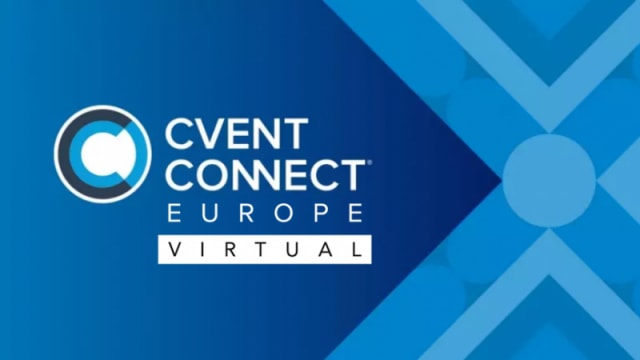Do hybrid events have three audiences, rather than two?

This article is produced in partnership with Cvent.
As well as your in-person and on-line attendees, don’t forget the importance of on-demand content for those who enjoy mixing live and virtual.
Back in BC (Before COVID) times, you’d put on a live event, delegates would attend, they’d return home with some new ideas and contacts, and that would be that. Shifting to a hybrid model hasn’t been easy, but it has also opened up opportunities to keep your message resonating for longer.
We’ve all been thinking about how we can provide great event experiences for both our in-person and virtual attendees. But there’s a third type of event consumer – one who attends the live event, but also views on-demand content afterwards.
Research carried out by Markletic in 2021 found that 65.9% of event organisers made their virtual events available on-demand after the fact. But there’s more to it than just loading unedited content onto a hub – for truly impactful and useful content, it needs to be considered and targeted to your audience.
You could repurpose talks and presentations into bite-sized, shareable videos and articles. Get creative with infographics, quotes and even memes. Find out who your most popular speaker was and add more talks from them. The possibilities are endless.
5 reasons to produce great on-demand content
1. No one misses out
As people grapple with changing COVID guidance and travel restrictions, they could miss out on live events. This is where having videos, interviews and articles on demand can be extremely helpful. Alternatively, an attendee may be at the live event but their favourite sessions could clash – in the past they would have had to choose, but not now.
And, of course, on-demand content is highly accessible, so people with limited mobility or who are geographically remote can still get involved..
Hugo Dawson, creative strategy director at award-winning agency Brands at Work, says: “Arguably, on-demand should always form part of an omni-channel experience – we certainly weave it into most of our hybrid events. In a world where relevance is key, on-demand is an intuitive way for audiences to engage with content that matters most to them in their own time.”
2. More revenue-generating potential
Think about the opportunities for sponsorship of on-demand content – it can provide more visible metrics than live content, with greater potential for lead generation and brand awareness.
Plus you can be creative with how you charge consumers for content. For instance, you may have different prices for people who attend the live event and those who attend the virtual event, and both could have access to on-demand content. But for people who didn’t attend either event, you could charge them separately for on-demand content – per video or article, or as a bulk deal.
3. Content can be shared on a wider scale
For Brands at Work, on-demand content is key to reaching a larger audience. Watson says: “This is also about reach, and increasing the value of the event over time: done well, on-demand content can double as a dynamic toolkit to cascade messages and outcomes to broader audiences. Just make sure you carefully plan what that content should be and how it should be presented from the outset.”
Typical of the new wave of events is London EV Show, an electric car trade show that’s running as a hybrid event in December 2021. Many in the industry will want to attend in person to see the latest models. Meanwhile a virtual option allows attendees to engage in forum discussions and Q&As, and there’ll also be on-demand content, which organisers hope will reach car enthusiasts far and wide.
4. Create evergreen content
Reggie Aggarwal, CEO of Cvent, whose virtual Attendee Hub helps create events around the world, told Cvent CONNECT Europe in October 2021: “When you factor in that content is now on-demand, the traditional start and end dates of events start to blur – because in the digital world, engagement never stops.
“We believe planners and marketers now have a tremendous opportunity to embrace what we’re calling the continuous event. These ‘always on’ digital environments are where event organisers can engage their customers, employees, members, alumni, or donors with more content and more opportunities to connect.”
5. Get the best of both worlds
We all know live events are great for networking, making connections and feeling part of something bigger than yourself. Virtual events can be more convenient and innovative. What, then, do consumers want from on-demand content? To learn something? To get new ideas? To be entertained? This will differ depending on the sector and audience, so event organisers need to ask their delegates how, where and why they access on-demand articles and videos – then make them as engaging, shareable and user-friendly as possible.


